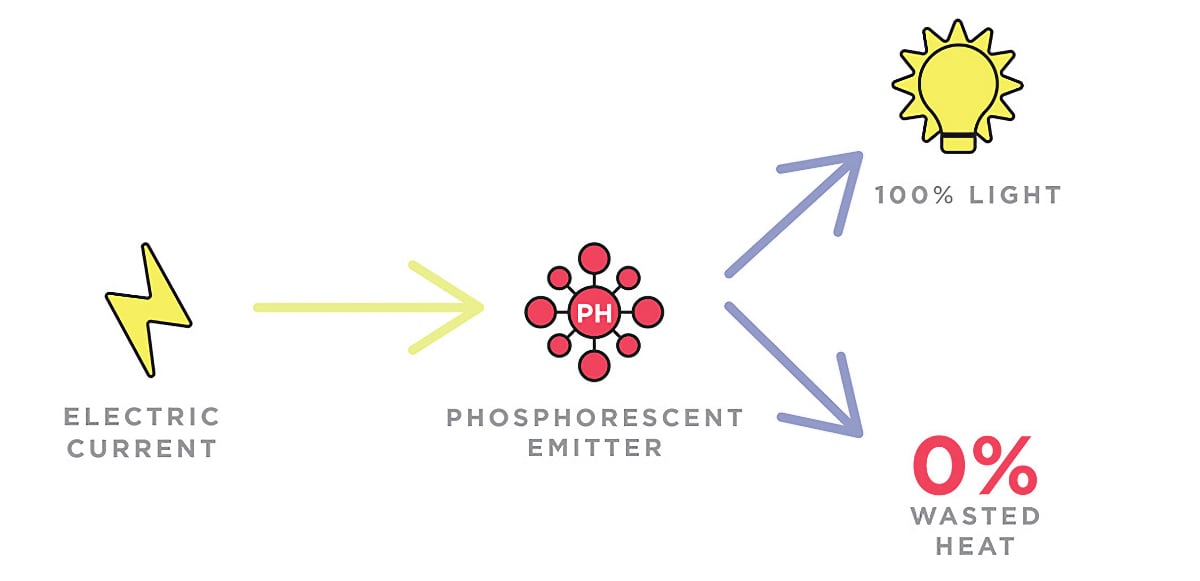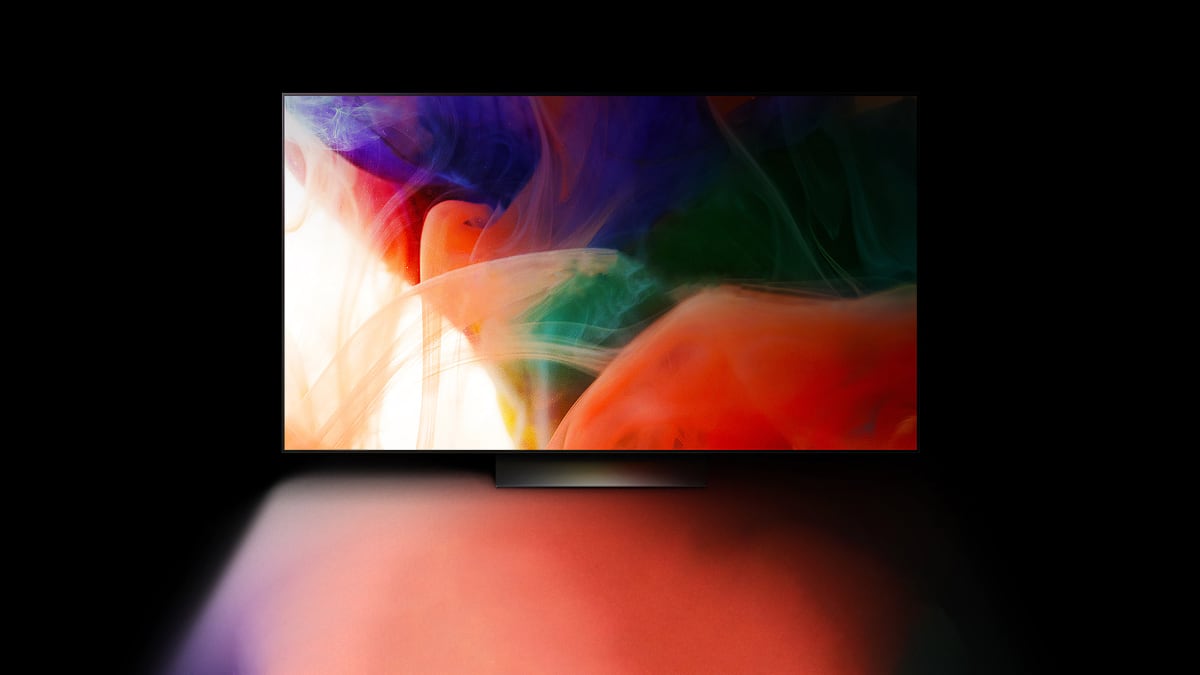LG Display and Samsung Display are both reviewing phosphorescent blue (PHOLED) that can improve the efficiency and performance of future OLED displays, according to the main supplier.
OLED emission can be divided into two types; fluorescence and phosphorescence (PHOLED). OLED displays including TVs already use phosphorescence for red and green, but blue is still fluorescent.
Universal Display (UDC) is emerging as the most likely supplier of phosphorescent blue (PHOLED) due to its years of research and patents in the area.
- "We plan to mass-produce them from 2024," Mike Hack, Vice President of Universal Display (UDC), told Korean newspaper ETNews. "Changing the blue OLED from fluorescence to phosphorescence can increase the luminous efficiency by 4 times."

UDC claims that its phosphorescent emitter has 100% conversion vs. just 25% for the fluorescent emitter. Graphic: UDC
How this dramatic efficiency gain translates into performance (or cost) improvements in future OLED TVs depends on the design of the OLED technology. LG Display currently produces WOLED with multiple layers of OLED materials while Samsung Display produces QD-OLED with fluorescent blue OLEDs and quantum dot converters for red and green. Samsung Display recently confirmed FlatpanelsHD that there is also a green phosphorescent OLED in the stack for both 2022 and 2023 QD-OLED – but it's not used for QD conversion.
It is still not clear if blue PHOLED will be ready for consumer OLED TVs in 2024. The launch timing is ultimately up to LG Display, Samsung Display and other panel makers. The two Korean panel makers are currently reviewing it, hinted Universal Display.
- "The specific application schedule is to be determined by (customer companies) Samsung Display and LG Display," said Mike Hack. "We plan to provide it to our customers at a reasonable price."
In 2023, consumers get OLED TV improvements due to other new developments. LG Display has started using MLA (Micro Lens Array) technology while Samsung Display has improved the design of QD-OLED for improved efficiency and brightness.
- Source: ETNews


